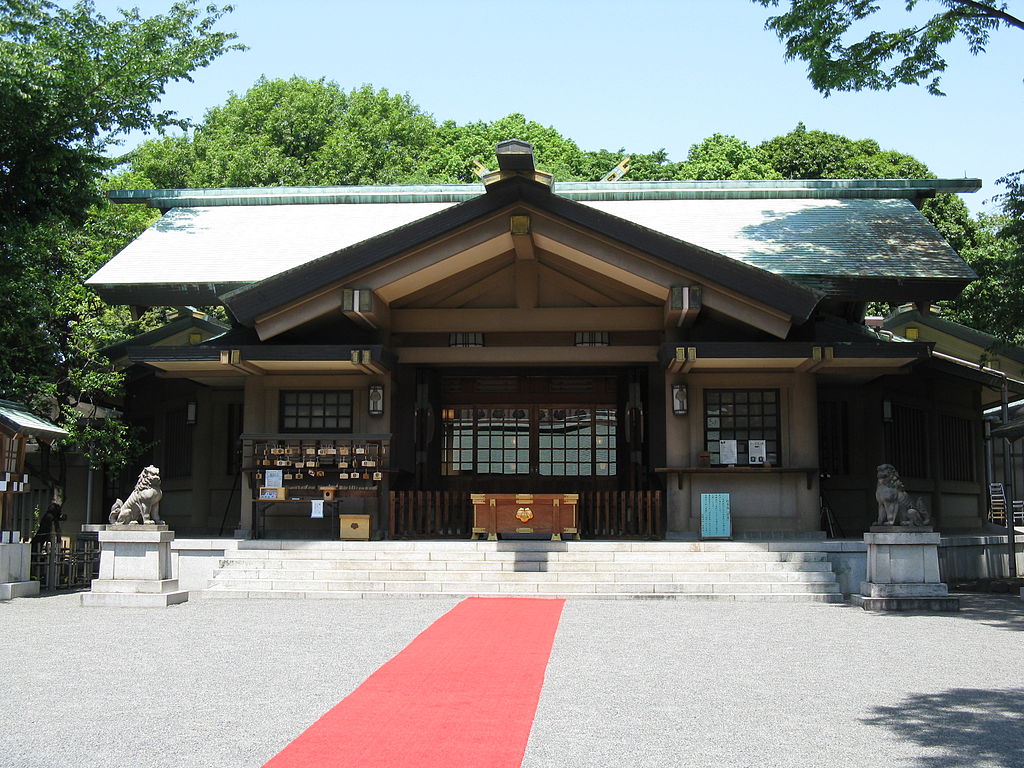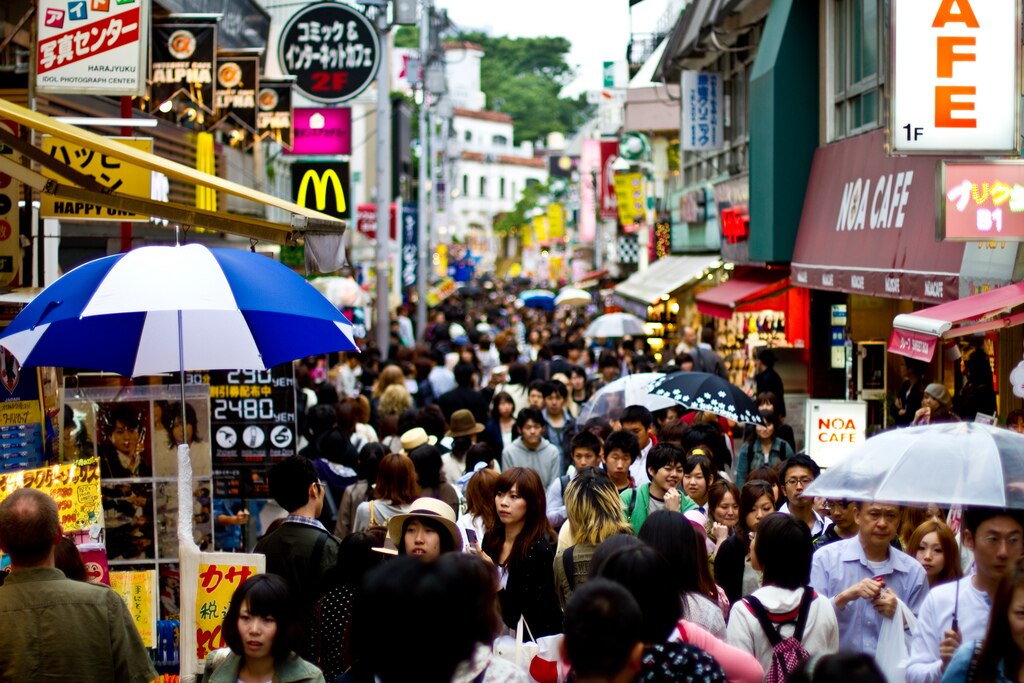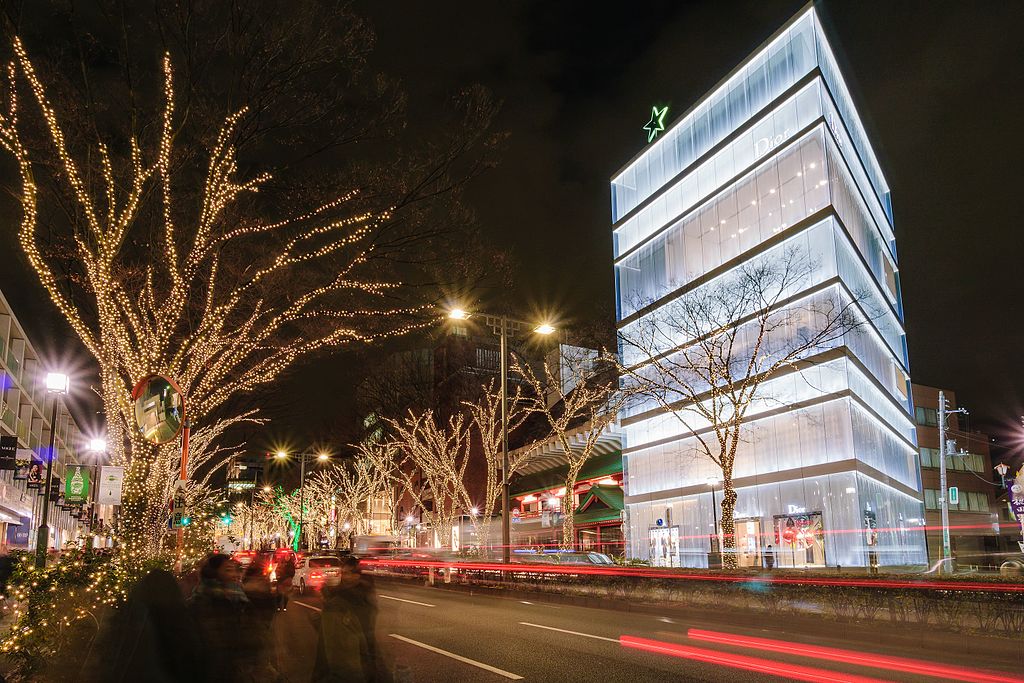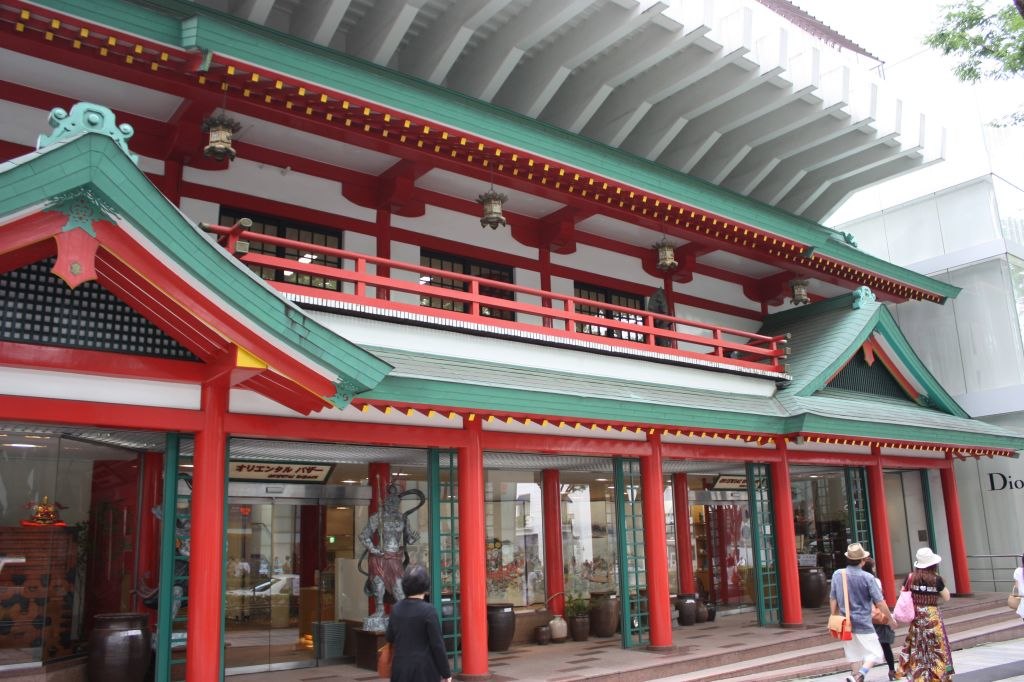What to do in Harajuku
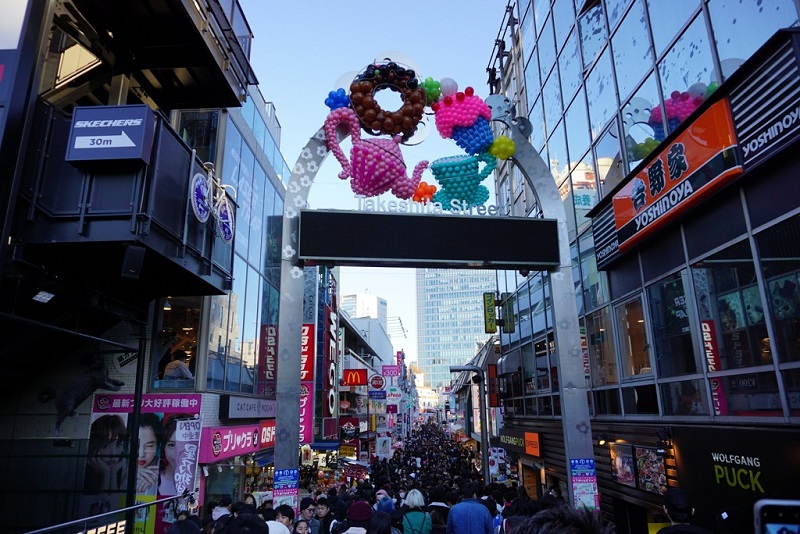
Photo by Luca Rodegher
How to get to Harajuku
The Harajuku district is easily accessible by train and underground.
By train you can use the JR Yamanote Line or the JR Saikyo Line from Ikebukuro or Osaki.
Underground lines passing through Harajuku are the Chiyoda Line (C03 Meiji-Jingumae – Tokyo Metro) and the Fukutoshin Line (F15 Meiji-Jingumae – Tokyo Metro).
Meiji Jingu, located in the heart of Tokyo, is one of the city’s most important and visited temples. Built in honour of Emperor Meiji and Empress Shoken, the temple is an oasis of tranquillity and spirituality. Set in a vast park, the Meiji Jingu offers a refuge from the hustle and bustle of the city with its ancient trees and serene paths. Visitors can also participate in religious traditions such as omikuji, gain the approval of deities and immerse themselves in Japanese culture. The Meiji Jingu is a major tourist attraction offering an authentic and spiritual experience in the heart of Tokyo.
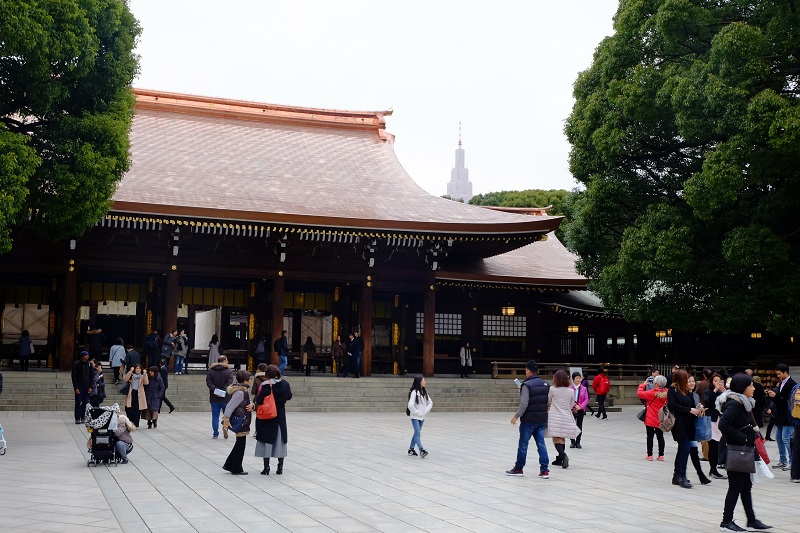
Photo by Japanforeveryone.com
Practical information
| View location on Google Maps | |
| Official website |
|
| Meiji Jingu | |
| From sunrise to sunset (see timetables on the official website) | |
| No closing days | |
| Free | |
| Museum | |
| 9:00-16:30 Last entry 30 minutes before closing time |
|
| Thursday (or the following day if Thursday is a public holiday) Closures between exhibitions |
|
| 1000 Yen | |
| Indoor garden | |
| 9:00-16:30 (until 16:00 from November to February) Last entry 30 minutes before closing time Extended hours on central days of June |
|
| No closing days | |
| 500 Yen | |
| 10 minutes’ walk north-west of JR Harajuku Station (Yamanote Line) 15 minutes’ walk north-west of Meiji-Jingumae underground station (C03 – F15) |
Togo Jinja
Togo Jinja is a fascinating and historically rich shrine located in Tokyo’s Harajuku district. Built in honour of Admiral Heihachiro Togo, one of Japan’s most famous naval commanders, the shrine attracts visitors and devotees from all over the country. Here it is possible to participate in religious ceremonies, pay homage to Admiral Togo and pray for safety at sea. The shrine is surrounded by a beautiful Japanese garden, where visitors can enjoy a moment of tranquillity and contemplation. Togo Jinja is an evocative place that offers an opportunity to immerse oneself in the history and spirituality of Japan.
I, KENPEI, CC BY-SA 3.0, via Wikimedia Commons
Practical information
| View location on Google Maps | |
| Official website |
|
| No closing days | |
| Free | |
| 5 minutes’ walk north-east of JR Harajuku Station 5 minutes’ walk north of Meiji-Jingumae underground station (C03 – F15) |
Ōta Memorial Museum of Ukiyo-e Art
The Ōta Memorial Museum of Ukiyo-e Art is a hidden gem for lovers of traditional Japanese art. Located in the Ōta district of Tokyo, the museum houses an extensive collection of ukiyo-e prints depicting everyday life in the Edo era. The exhibits are fascinating and showcase the unique aesthetics and craftsmanship of ukiyo-e artists. In addition to the permanent exhibitions, the museum regularly organises special exhibitions and workshops to raise awareness of this fascinating art form. The Memorial Museum of Ukiyo-e Art in Ōta is a must-see place to immerse yourself in the rich history of ukiyo-e.
Rs1421, CC BY-SA 3.0, via Wikimedia Commons
Practical information
| View location on Google Maps | |
| Official website |
|
| 10:00-17:30 Last entry 30 minutes before closing time |
|
| Monday (or the following day if Monday is a National Holiday) New Year’s Day Closure between exhibitions |
|
| Typically 700 to 1000 Yen Ticket prices may vary depending on the exhibition (check official website) |
|
| 5 minutes’ walk east of JR Harajuku station 2 minutes’ walk north of Meiji-Jingumae underground station (C03 – F15) |
Yoyogi Park (Yoyogi Koen)
Yoyogi Park is one of Tokyo’s green lungs. With a vast expanse of land, the park offers an oasis of tranquillity amidst the hustle and bustle of the city. Ancient trees, manicured lawns and picturesque paths make this an ideal place for a relaxing stroll or a family picnic. The park is also famous for its Meiji Shrine, one of Japan’s most important shrines, where visitors can participate in religious traditions and enjoy the surrounding spirituality. Yoyogi Park is a magical place where nature and culture come together to create a unique experience in bustling Tokyo.
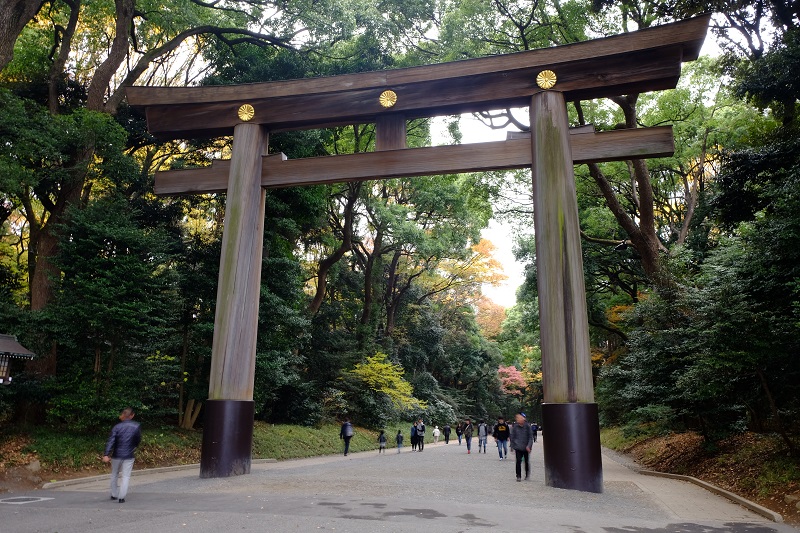
Photo by Japanforeveryone.com
Practical information
| View location on Google Maps | |
| Official page |
|
| Always open | |
| No closing days | |
| Free | |
| 2 minutes’ walk west of JR Harajuku Station (Yamanote Line) 5 minutes’ walk west of Meiji-Jingumae underground station (C03 – F15) |
Yoyogi National Stadium
The Yoyogi National Stadium is one of Tokyo’s major sports facilities. Located in the Shibuya district, the stadium was built for the 1964 Olympic Games and is still used for major sporting events and concerts. The unique design of the suspended roof has made the stadium an architectural icon. Surrounded by a large park, it also offers space for outdoor activities such as jogging and picnics. With its history and vibrant atmosphere, the Yoyogi National Stadium is the perfect place to enjoy sports and entertainment in the Japanese capital.
Kakidai, CC BY-SA 4.0, via Wikimedia Commons
Practical information
| View location on Google Maps | |
| The stadium is located south of Yoyogi Park 5 minutes’ walk east of JR Harajuku Station 10 minutes’ walk east of Meiji-Jingumae underground station (C03 – F15) |
Nezu Museum
Founded in 1941, the Nezu Museum houses a rich collection of Asian art, with works ranging from China and Korea to ancient Japan. The exhibition rooms are harmoniously designed and the surrounding Japanese garden adds a touch of serenity. The Nezu Museum also organises special exhibitions and cultural events, offering art enthusiasts a stimulating and educational experience. It is a must for lovers of Asian art and Japanese culture.
Kentin, CC BY-SA 3.0, via Wikimedia Commons
Practical information
| View location on Google Maps | |
| Official website |
|
| 10:00-17:00 Last entry 30 minutes before closing time |
|
| Monday (next day if Monday is a National Holiday) New Year’s Day Between exhibitions |
|
| 1300 Yen 1500 Yen for special exhibitions |
|
| 10 minutes’ walk south-east of Omotesando metro station (C04 – Z02 – G02) |
Takeshita Dori
Takeshita Dori is one of Tokyo’s most iconic streets, located in the Harajuku district. This pedestrian street is famous for its lively and fashionable atmosphere, attracting young people and tourists from all over the world. Fashionable boutiques, vintage clothing shops and unique cafés make Takeshita Dori a shopping paradise for fashion lovers. The street is also famous for its colourful and innovative desserts, such as giant crepes and the famous soup ice cream. Takeshita Dori is a must-visit place to experience the energy and creativity of Tokyo.
Jordy Meow, CC BY 3.0, via Wikimedia Commons
Practical information
| View location on Google Maps | |
| Shops: 11:00-20:00 | |
| 2 minutes’ walk east of JR Harajuku Station 5 minutes’ walk north-west of Meiji-Jingumae underground station (C03 – F15) |
Omotesando
Omotesando is one of the most elegant and sophisticated streets in Tokyo, located in the Shibuya district. Known as the ‘Champs-Élysées of Japan’, this pedestrian street captivates with its high-fashion boutiques, designer shops and elegant cafés. The architectural design of the buildings along Omotesando is spectacular, with many modern works of art. In addition, Omotesando is home to major international and local fashion brands. It is the ideal place to do some luxury shopping, enjoy a quick coffee or simply stroll around admiring Tokyo’s sophisticated atmosphere.
Wei-Te Wong from Taipei City, Taiwan, Republic of China, CC BY-SA 2.0, via Wikimedia Commons
Practical information
| View location on Google Maps | |
| Shops: 11:00-20:00 | |
| 10 minutes’ walk east of JR Harajuku Station 7 minutes’ walk east of Meiji-Jingumae underground station (C03 – F15) 6 minutes’ walk west of Omotesando Subway Station (Z02 – C04 – G02) |
Omotesando Hills
Omotesando Hills is a luxurious shopping centre located in the Shibuya district of Tokyo. Opened in 2006, the complex is known for its beautiful architecture and prestigious assortment of shops, restaurants, bars and cafés. With its fashionable design and elegant décor, Omotesando Hills is home to many luxury boutiques, including Gucci, Chanel and Louis Vuitton. The complex has been designed to offer a unique shopping experience, with spacious, modern spaces and a mix of international and Japanese brands. Omotesando Hills is a must for luxury shopping in Tokyo.
663highland, CC BY-SA 3.0, via Wikimedia Commons
Practical information
| View location on Google Maps | |
| Official website |
|
| Shops: 11:00-21:00 (Sunday until 20:00) Restaurants: 11:00-23:30 (Sunday until 22:30) |
LaForet Harajuku
LaForet Harajuku is an iconic shopping destination in Tokyo’s Harajuku district. This large shopping centre is renowned for its wide selection of eccentric and alternative fashion shops. With its many floors, it offers an amazing range of local and international brands, clothing, accessories and cosmetics. LaForet Harajuku is the ideal place for fashion lovers looking for unique and trendy clothes that cannot be found elsewhere.
Comyu, CC BY-SA 3.0, via Wikimedia Commons
Practical information
| View location on Google Maps | |
| Official website |
|
| 11:00-21:00 |
Daiso Harajuku – 100 Yen Shop
Daiso Harajuku is the largest design shop in downtown Tokyo. In this shop, you can find a wide range of Japanese products with an affordable price of 100 Yen, including household items, beauty accessories, gifts, toys and food. With its wide range of products and convenient prices, Daiso is the ideal place for fun and affordable shopping during a visit to Harajuku in Tokyo.
Rudy Herman, CC BY 2.0, via Wikimedia Commons
Practical information
| View location on Google Maps | |
| Official website |
|
| 9:30-21:00 |
Oriental Bazaar
Oriental Bazaar is an iconic souvenir shop in Tokyo, located in the Omotesando area. With its wide range of Japanese products, including kimonos, traditional ceramics, lacquerware, textiles and household products, Oriental Bazaar is the ideal place to find unique gifts for friends and family. The shop offers an authentic shopping experience and a wide selection of high-quality Japanese products.
cozy2009, CC BY-SA 3.0, via Wikimedia Commons
Practical information
| View location on Google Maps | |
| Official website |
|
| 10:00-19:00 | |
| Thursday |

